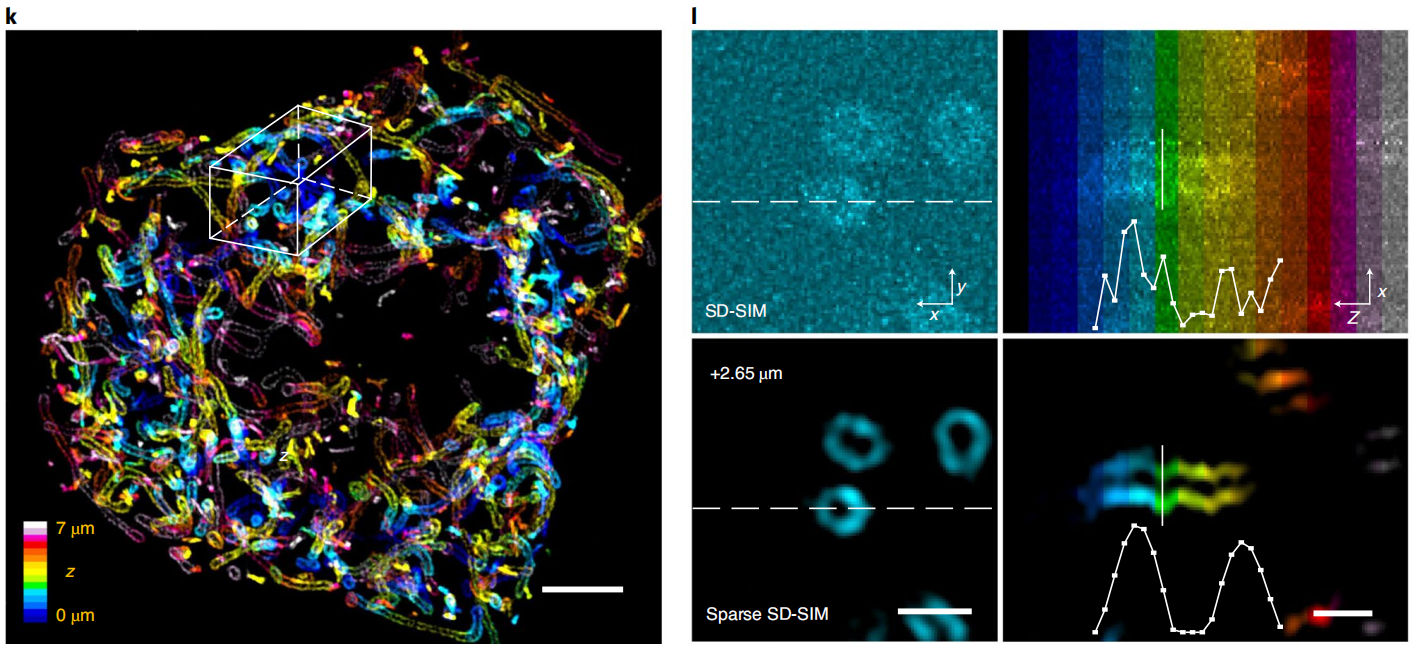Weisong Zhao,Shiqun Zhao,Liuju Li,Xiaoshuai Huang,Shijia Xing,Yulin Zhang,Guohua Qiu,Zhenqian Han,Yingxu Shang,De-en Sun,Chunyan Shan,Runlong Wu,Lusheng Gu,Shuwen Zhang,Riwang Chen,Jian Xiao,Yanquan Mo,Jianyong Wang,Wei Ji,Xing Chen,Baoquan Ding,Yanmei Liu,Heng Mao,Bao-Liang Song,Jiubin Tan,Jian Liu,Haoyu Li✉ &Liangyi Chen✉
Abstract
A main determinant of the spatial resolution of live-cell super-resolution (SR) microscopes is the maximum photon flux that can be collected. To further increase the effective resolution for a given photon flux, we take advantage of a priori knowledge about the sparsity and continuity of biological structures to develop a deconvolution algorithm that increases the resolution of SR microscopes nearly twofold. Our method, sparse structured illumination microscopy (Sparse-SIM), achieves ~60-nm resolution at a frame rate of up to 564 Hz, allowing it to resolve intricate structures, including small vesicular fusion pores, ring-shaped nuclear pores formed by nucleoporins and relative movements of inner and outer mitochondrial membranes in live cells. Sparse deconvolution can also be used to increase the three-dimensional resolution of spinning-disc confocal-based SIM, even at low signal-to-noise ratios, which allows four-color, three-dimensional live-cell SR imaging at ~90-nm resolution. Overall, sparse deconvolution will be useful to increase the spatiotemporal resolution of live-cell fluorescence microscopy.
https://doi.org/10.1038/s41587-021-01092-2

